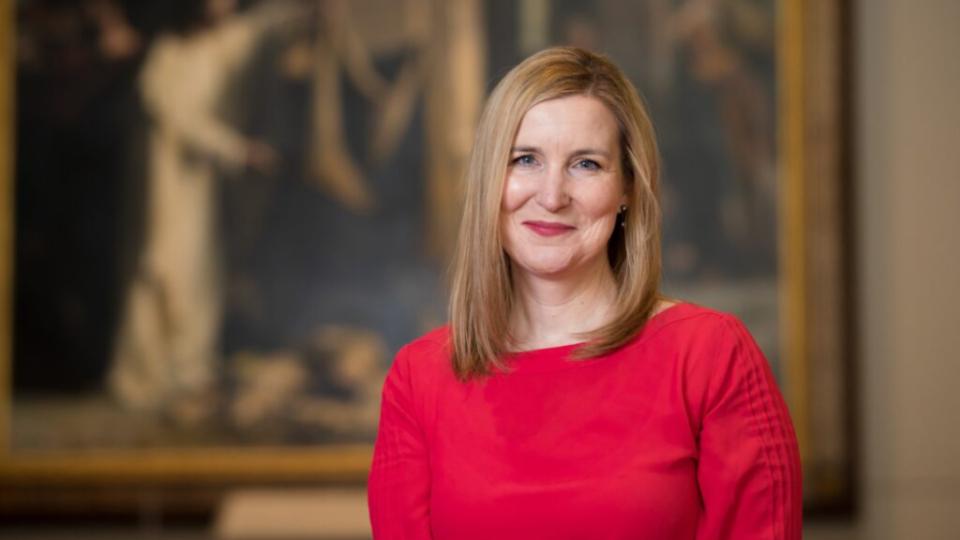
Janalee-Emmer
Janalee Emmer, a Brigham Young University alum and a veteran museum curator, was recently appointed as the director of BYU’s popular Museum of Art. Courtesy of BYU-MOA, courtesy of Church News.All rights reserved.This story appears here courtesy of TheChurchNews.com. It is not for use by other media.
By Jason Swensen, Church News
Janalee Emmer may be still learning the proverbial ropes as the new director of Brigham Young University (BYU) Museum of Art (MOA), but her connection to — and affection for — the campus facility stretches back to her own college days.
“I’m a BYU alum, and as an undergraduate, I loved coming to the MOA,” she told the Church News. “It was always a place of … calm, with compelling artwork that pulled me in. And over the years, I’ve continued to love the museum.”
Emmer being hired for the Museum of Art’s top spot is historic. The Sandy, Utah, native is the first woman to serve as museum director since its founding in 1993. “I believe deeply in the power of the arts and am honored to have stewardship of this impressive institution and collection as we move into this next chapter.”
Emmer replaced Mark Magleby, who directed the MOA for almost a decade. Magleby is now the museum’s emeritus director and development chair.
Students and patrons have already witnessed Emmer’s influence at the MOA. Prior to her recent appointment, she served as the museum’s head of education and the associate director of exhibitions and programs.
A veteran curator, she has organized numerous MOA exhibitions — including “Embracing Diverse Voices: A Century of African American Art,” “A Studio of Her Own: Women Artists From the MOA Collection” and the recent “Far Out: The West Re-Seen, Photography of Victoria Sambunaris.”
The MOA is a campus-based art museum like no other. It offers a span of exhibitions designed to uplift, educate, inspire and provoke thought — even while supporting the academic and spiritual mission of the Church-owned university.
That dual focus excites Emmer.
“We can honor and celebrate religious art as part of our connection to the university and to the Church, and not just for its historical value but also for its inspirational value,” she said. “And on the other hand, we are a university museum, so we have the ability to show artwork from all different styles and periods.”
The COVID-19 pandemic has altered museum operations. The MOA closed for several months in 2020 and was, for a time, an exclusively virtual destination. For Emmer, the disruption only reinforced her certainty of the importance of museums to communities.
“Outside of churches, museums are one of few places in today’s frequently loud and busy society that allow for [introspection] and meditation,” she said. “Both churches and museums allow for quiet contemplation [and provide] wonder and awe. I think that feels welcome and familiar to our visitors.”
The MOA is now open to visitors Mondays through Saturdays, although safety measures such as face coverings and social distancing remain in place. Despite the ongoing challenges, the museum’s new director is certain many good days await patrons.
“We have exciting things in store at the museum — from acquisitions to exhibitions to engaging programming — especially as conditions allow for more interaction in [the] coming months,” said Emmer. “Our recent acquisitions of Arnold Friberg’s ‘Peace Be Still’ and Herbert Schmalz’s ‘Return From Calvary’ both show our commitment to providing faith-confirming experiences with art, and allow us to feel a connection to artists of different time periods.”
When not at the museum, Emmer enjoys hiking, playing tennis, playing the piano and flute and, during the pandemic, sharpening her skills on the baritone ukulele.
See the museum’s website, moa.byu.edu, for information about hours and exhibits.
Copyright 2021 Deseret News Publishing Company